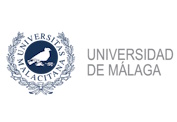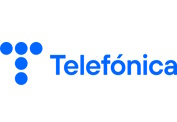Towards standardized 6G connectivity for Ambient-IoT devices
Thursday, 5 June 2025, 11:00 – 12:30, room 0.B
Session Chair:
- Jeroen Famaey (IMEC & Univ. of Antwerp, BE)
Internet of Things (IoT) technology is widely recognised as having the potential to tackle some of the world’s biggest challenges. However, to truly benefit society and enable a sustainable future, IoT innovations will need to address the technology gap that exists in powering the rising number of IoT devices. Specifically, the environmental and economic cost associated with the battery maintenance and replacement of hundreds of billions of future IoT devices will be exorbitant. To tackle this, a new class of energy-neutral IoT devices has been proposed, which exploit ambient energy harvesting or wireless power transfer to recharge their energy storage. Energy-neutral devices can achieve decades-long energy autonomy. However, this comes at the cost of an unpredictable energy supply and limited power budget. Ensuring effective and reliable communications and computing on such devices requires a radical rethinking of both the device itself, as well as the network infrastructure it connects to.
This special session will explore recent research efforts on energy-neutral 6G devices and its implications on the network infrastructure. The considered topics include an operator perspective on how to integrate energy-neutral devices into mobile networks from a technical and business point of view, an overview of relevant 3GPP standardization efforts on Ambient-IoT, and solutions for effective wireless power transfer. It will bring together three SNS JU projects working in this area: the flagship 6G project Hexa-X-II, SUPERIOT, and the newly started AMBIENT-6G.
Programme
11:00 – 11:30: Keynote: Dinh Thuy Phan Huy, Orange
Title of the talk:
Zero Energy Devices for 6G: An Operator Perspective
Recently, a new type of device, called Ambient Internet of Things (AIoT) device has been introduced for study and discussion at the 3rd generation partnership project (3GPP) of standardisation of mobile networks. This novel type of device is energy-autonomous, it does not need its battery to be replaced or charged manually. It harvests ambient energy to power itself and connect to the mobile network. Orange is currently actively exploring such kind of novel device to provide IoT services in a way that is sustainable economically, environmentally and societally, following the 6th Generation (6G) European Flagship Project Hexa-X II guidelines. Indeed, Orange Zero-Energy Devices (ZED) prototypes harvest ambient indoor and outdoor light to power themselves. They do not generate additional waves, instead they backscatter waves from the ambient Orange commercial mobile network and commercial smartphones, to broadcast their messages. Orange assesses these ZEDs, through simulations and experiments on the field, for the two use cases: (1) asset-tracking in outdoor thanks to ZED tags and (2)indoor self-positioning of smartphones thanks to ZED beacons.
11:30 – 11:45: Talk by Bikramjit Singh, Ericsson
Title of the talk:
3GPP Ambient-IoT standardization in Rel. 19 and beyond
Ambient Internet of Things (Ambient IoT) is an emerging third-generation partnership project (3GPP) IoT communication technology designed to support ultra-low-complexity devices powered by ambient energy sources. This talk provides an overview of Ambient IoT, highlighting representative use cases and key requirements. It summarizes the ongoing standardization efforts under 3GPP Release 19 and offers a brief overview of the specified features related to the protocol stack, functionalities, and procedures for inventory and command management. The talk also outlines the commonalities and key distinctions between Ambient IoT and other non-3GPP technologies, primarily RFID, given the target Ambient IoT Release 19 device complexity is to be comparable to the UHF RFID C1G2 standard. Additionally, the talk explores the potential scope of Ambient IoT in Release 20, which may address more complex devices, deployment scenarios, and topologies beyond those covered in Release 19 Work Item.
11:45 – 12:00: Talk by Liesbet Van der Perre, KULeuven
Title of the talk:
Advances in Wireless Power Transfer using Large Arrays
Wireless power transfer (WPT) holds promise for enhancing device autonomy, especially in energy-limited Internet of Things (IoT) systems. A major hurdle remains the rapid decay of received power with distance when using small-aperture antennas. This talk explores how physically large antenna arrays—such as those found in cell-free and extremely large MIMO (XL-MIMO) systems, including RadioWeaves—enable a shift from far-field beamforming to near-field beam focusing, where the received power can remain nearly independent of distance. By shaping distance-adaptive gain patterns, large arrays can concentrate power at device locations while reducing unnecessary exposure elsewhere. This has direct implications for human safety, particularly to the Specific Absorption Rate (SAR)—a key regulatory constraint on electromagnetic energy absorption in biological tissue. Near-field focusing naturally aligns with SAR compliance by minimizing ambient exposure. The second part of the talk presents experimental results from the Techtile testbed—a distributed, large-scale antenna array platform for WPT in the near field. We compare coherent and non-coherent transmit diversity, demonstrating that fully synchronized beam focusing provides a 14 dB gain over non-coherent transmission, closely matching the theoretical 14.9 dB gain for a 31-element array. Furthermore, phase alignment errors below 20° result in less than 1 dB loss, while errors exceeding 40° cause performance degradation beyond 3 dB. This suggests that phase synchronization can be relaxed, and that scaling the number of antennas is a viable strategy to improve wireless power efficiency. While efficiency remains low, this work highlights a regulatory-compliant pathway toward distributed WPT for IoT deployments.
12:00 – 12:15: Talk by Tuomas Paso, University of Oulu
Title of the talk:
Energy-autonomous radio-optical IoT for sustainable wireless communications
The SUPERIOT project aims at developing a truly sustainable and highly flexible IoT system based on the use of optical and radio communications and exploiting printed electronics technology in the implementation of sustainable IoT nodes. The dual-mode optical-radio approach provides unique characteristics to the IoT system: it can be reconfigured to use optical, radio, or both approaches for more reliable and robust connectivity and improved positioning. The hybrid optical-radio system allows very efficient use of resources while combining the advantages of both wireless communication methods. Energy autonomous nodes will have essential IoT functionalities such as sensing, actuating, and computational capabilities and they can harvest energy from both sources thus resulting in an efficient and reliable energy system. Moreover, the dual-mode approach results in a highly flexible and adaptable communication system that can operate efficiently under changing conditions and in different scenarios. The approach to sustainability is holistic: sustainability is considered at the design, implementation, usage, and disposal phases, creating a truly sustainable IoT system. The project will also identify, develop, and demonstrate applications for the proposed concept. Four demonstrators will be developed at the final stage of the project, including a) Reconfigurable optical-radio IoT node implemented with printed and conventional electronics technologies, b) Reconfigurable optical-radio IoT network, c) Limited capability IoT node implemented with printed electronics technology only, and d) Large-area IoT node/repeater.
12:15 – 12:30: Talk by Onel Lopez, University of Oulu
Title of the talk:
Energy-aware operation protocols for energy-harvesting IoT
The intermittent and limited energy availability typical of low-complexity energy-harvesting (EH) IoT networks challenges how devices sense, compute, actuate, and communicate. To ensure robust and sustainable operation under such constraints, devices may adopt energy-aware operation strategies that dynamically adapt their behaviour based on real-time and/or predicted energy availability. This talk explores this research domain, emphasizing how energy and energy information (EI) must be treated as first-class resources for protocol and system design. We begin by motivating the need for EI acquisition, detailing where and how energy availability can be measured and discussing the role of energy forecasting. The associated costs and fidelity of acquisition/forecasting are assessed, as these directly impact the feasibility and responsiveness of energy-aware protocols in ultra-constrained systems. We then examine the functional workload of EH-IoT nodes, characterizing the tasks they perform in terms of energy cost, execution granularity, and timing flexibility. We argue that such profiling is essential for informed energy budgeting and scheduling. Building on this foundation, the talk delves into energy-aware protocol design principles, providing illustrative examples, and disclosing key challenges and potential research directions. As EH-IoT deployments scale and expand application horizons, the energy-aware operation principles and associated technologies we discuss and envision may become foundational elements of future autonomous and dependable IoT systems.








